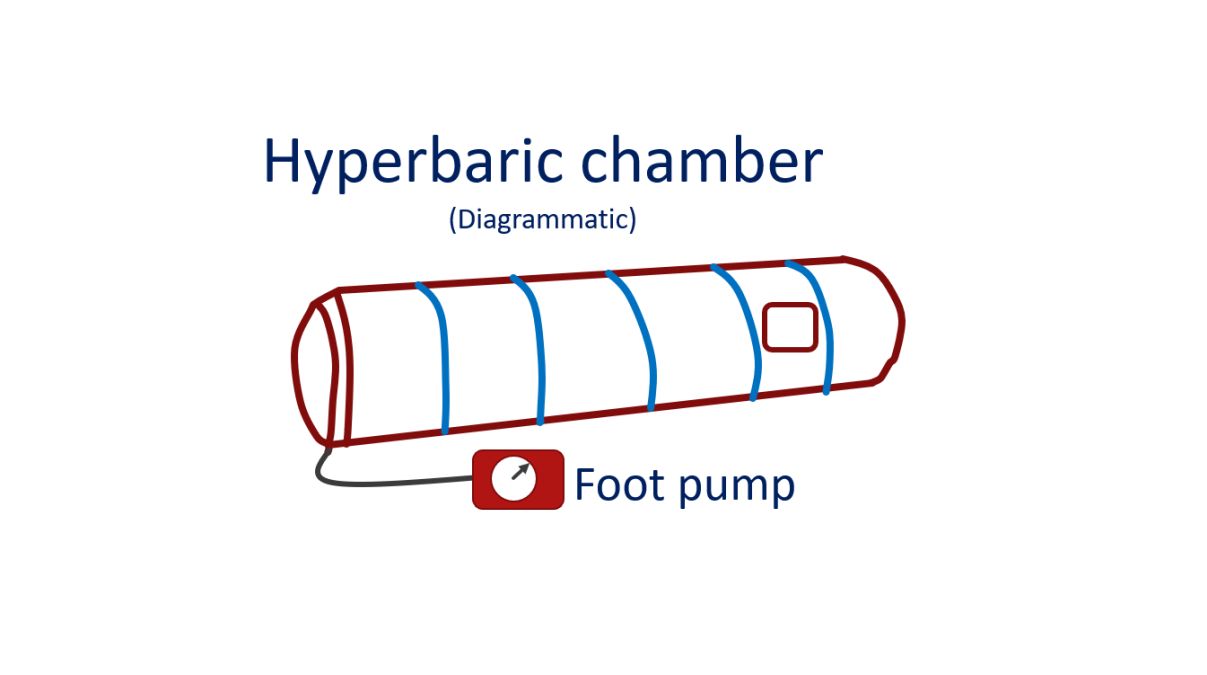High altitude pulmonary edema (HAPE)
High altitude pulmonary edema (HAPE)
High altitude pulmonary edema is characterized by inhomogeneous pulmonary vasoconstriction in response to reduced oxygen concentration in the inhaled air at high altitude. It may be noted that oxygen is one of the most potent pulmonary vasodilator, which is used therapeutically in the management of chronic pulmonary hypertension by way of nocturnal oxygen therapy. In high altitude pulmonary edema, the inhomogeneous pulmonary vasoconstriction leads to elevated pulmonary capillary pressure and leakage of fluid into the alveoli. This is in fact a form of non cardiogenic pulmonary edema. Oxygen therapy and descend to lower altitudes are the logical answer for the treatment of high altitude pulmonary edema.
Drugs like sildenafil, tadalafil and nifedipine have been used as pulmonary vasodilators in the management of high altitude pulmonary edema [1]. Dexamethasone is also considered useful in high altitude pulmonary edema [2].
A slow ascent of not more than 300 meters per day above altitudes of 2500 meters, to allow acclimatization can be useful. Shorter stays of less than five days is also recommended in those prone for the disorder. Defective alveolar fluid clearance may be an important component in the pathogenesis of high altitude pulmonary edema [3]. Ultrasound lung comets have been detected as evidence of subclinical high altitude pulmonary edema in recreational climbers rather frequently [4]. Portable hyperbaric chamber has also been used in the immediate management of high altitude pulmonary edema [5].
Portable hyperbaric chambers allow hikers to simulate conditions at lower altitude without actually climbing down. They are useful if bad weather or some other factors prevent a quick descent to a lower altitude. A portable hyperbaric chamber can be operated by a foot pump and can simulate a descent of about 1500 meters within a few minutes by increasing the pressure within the bag. Portable hyperbaric chambers are inflatable bags and weigh about 6.5 Kg. When expanded they are cylindrical in shape and large enough to accommodate a person. The foot pump has to be operated continuously while the person is in the bag to supply fresh oxygen and to flush out carbon dioxide [7].

References
- Maggiorini M. Prevention and treatment of high-altitude pulmonary edema. Prog Cardiovasc Dis. 2010;52:500-6.
- Maggiorini M, Brunner-La Rocca HP, Peth S, Fischler M, Böhm T, Bernheim A, Kiencke S, Bloch KE, Dehnert C, Naeije R, Lehmann T, Bärtsch P, Mairbäurl H. Both tadalafil and dexamethasone may reduce the incidence of high-altitude pulmonary edema: a randomized trial. Ann Intern Med. 2006;145:497-506.
- Scherrer U, Rexhaj E, Jayet PY, Allemann Y, Sartori C. New insights in the pathogenesis of high-altitude pulmonary edema. Prog Cardiovasc Dis. 2010;52:485-92.
- Pratali L, Cavana M, Sicari R, Picano E. Frequent subclinical high-altitude pulmonary edema detected by chest sonography as ultrasound lung comets in recreational climbers. Crit Care Med. 2010;38:1818-23.
- Stream JO, Grissom CK. Update on high-altitude pulmonary edema: pathogenesis, prevention, and treatment. Wilderness Environ Med. 2008;19:293-303.
- Taylor AT. High-altitude illnesses: physiology, risk factors, prevention, and treatment. Rambam Maimonides Med J. 2011 Jan 31;2(1):e0022. doi: 10.5041/RMMJ.10022. PMID: 23908794; PMCID: PMC3678789.



